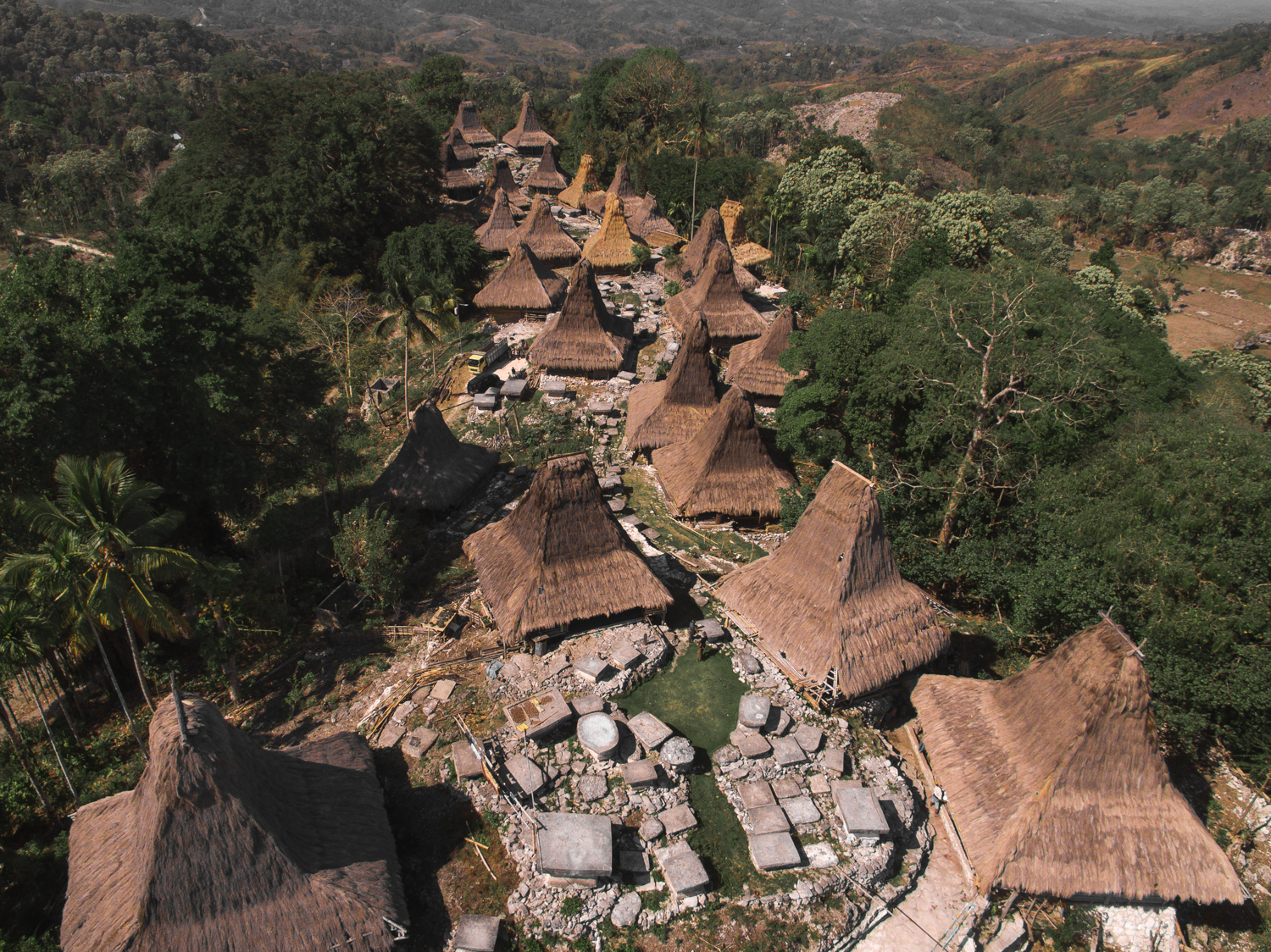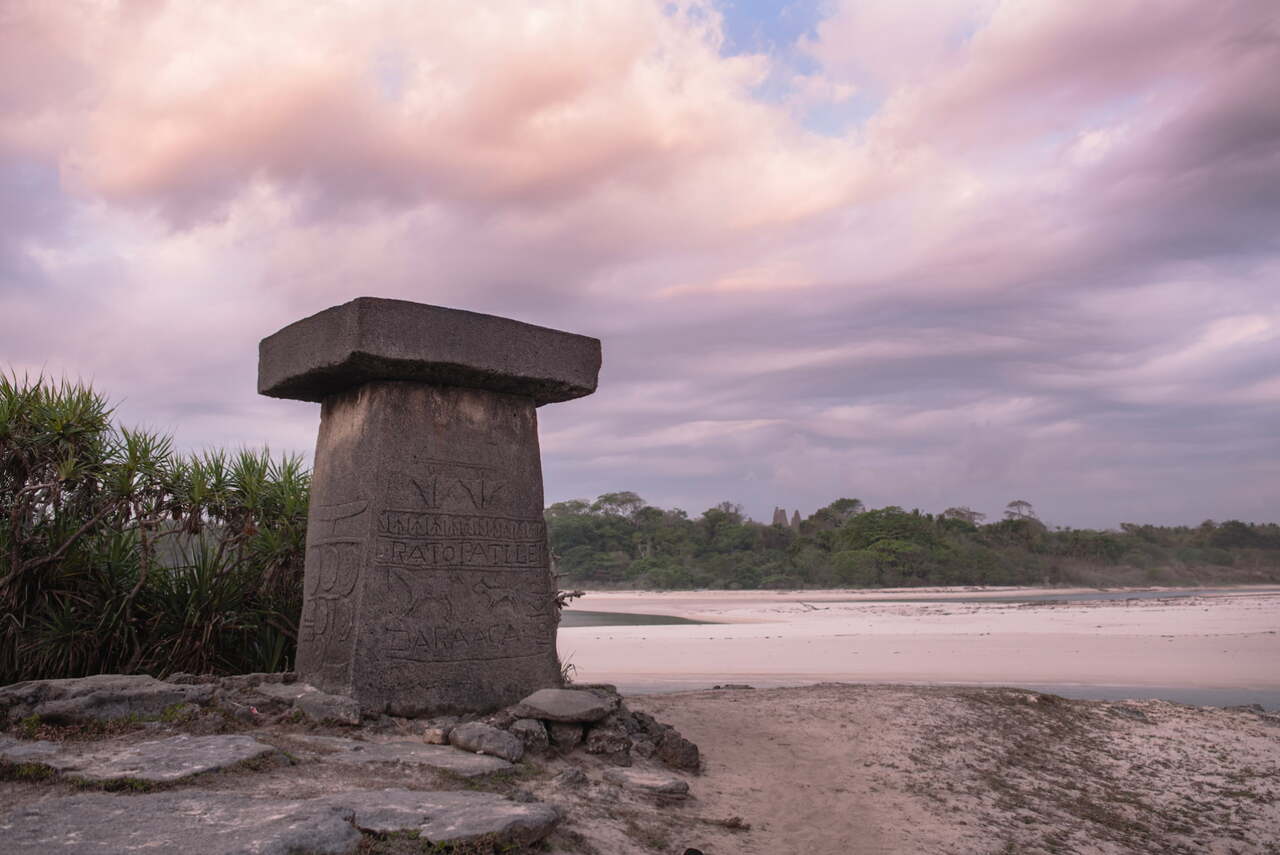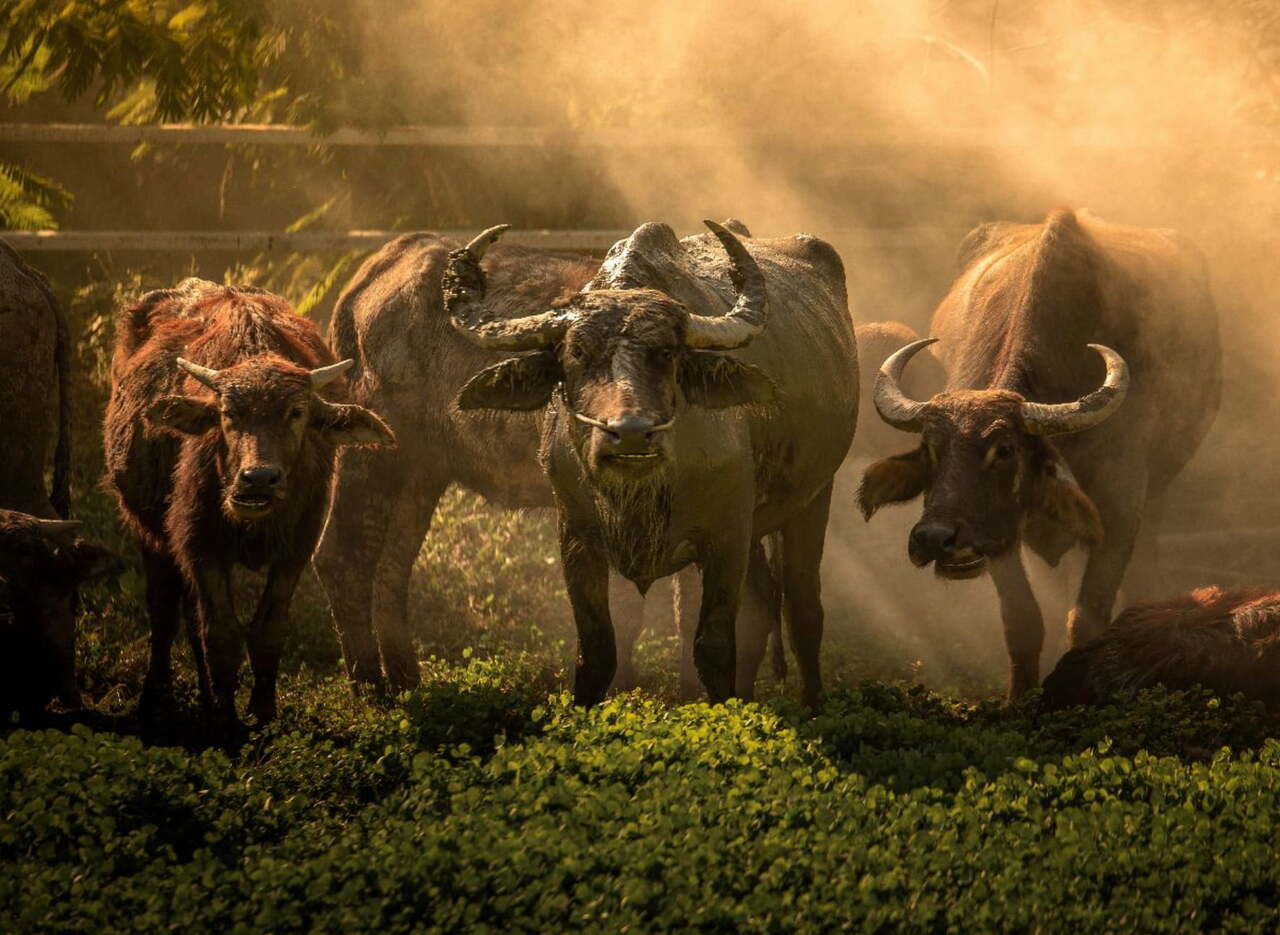Discover Sumba's traditional houses
June 24, 2021
Rows of soaring thatched roofs perched on small wooden houses like sorcerers hats are an emblematic feature of the mystifying and beautiful Sumba skyline surrounding Cap Karoso. But what do they mean?
Known as uma mbatangu, these traditional peaked houses are built according to Marapu (the local ancestral religion) and consist of three levels. There is a lower level below the house for livestock, a middle level on the ground floor for people and everyday activity, and a top level in the high-pitched roof where the Marapu reside. This top level is the sacred space and is, therefore, the most important feature of the house. Reaching towards the spirit world — the higher the roof, the closer one is to God — it is where sacred heirlooms, ancestral artefacts, and offerings addressed to the ancestors are placed. Only older men are permitted to enter, and rarely at that.
The form of the thatched alang-alang roof is also loaded with meaning, representing the female/male duality: the peak is male and the skirt is female. This female/male duality continues into the house itself where the square windowless space is organised around four symbolically carved pillars. In the masculine right-hand side, the front-right pillar marks the site of rituals while the back-right pillar marks the area for butchering and dividing the meat of sacrificed animals. In the feminine left-hand side, the front-left pillar is for preparing rice, and dining, and sleeping, and the back-left pillar is for all activity regarding the animals. Each side of the house has its own access, with the door at the front on the right reserved for the men, and the door at the rear on the left reserved for the women. Both lead to separate external platforms. A cooking fire is located at the centre of the house, and buffalo horns, or similar, can decorate the walls as reminders of past sacrifice and wealth.
Within the village, the houses are then organised according to ancestral importance, with the biggest house (uma bungguru), where important rituals such as weddings and funerals are conducted, often raised up from the others. All the houses surround large megalithic tombs and areas for ritual dances and sacrifices, and sometimes also an altar, temple, or structures for storing cultural artefacts. Villages also have so-called bald houses (uma kamadungu) which do not feature the soaring peaked roof and are not considered appropriate for rituals and ancestors.

